
The following article by David Strange originally appeared in The Courier-Journal on 19 Jun 2013. It is archived here with additional information for your reading enjoyment.
Seemingly small experiences can create big memories.
Such memories, often both good and bad at the same time depending on the perspective of the one remembering, can be made by repetition; by the simple volume of small things. British author, David Mitchell, wrote, "My life amounts to no more than one drop in a limitless ocean. Yet what is any ocean, but a multitude of drops?"
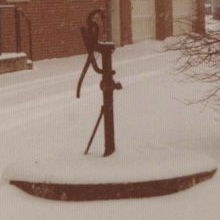
Take, for example, an old hand-pump water well that once stood in Shepherdsville on the lot where the Porter Building now stands at 162 South Buckman Street.
From as far back as anyone can remember (possibly back to the 1800's), that old water well served as a public source of drinking water and thus as a public gathering place. People would come from miles around to fill their cans and containers with what is remembered as "the best tasting water you could drink."
So far as I can find, no one knows just when the well came to be.
It just always was.
The house that once sat there was known as the Bridwell place when Ben Parrish and wife Maude Hartman Parrish bought it shortly after the 1937 flood.
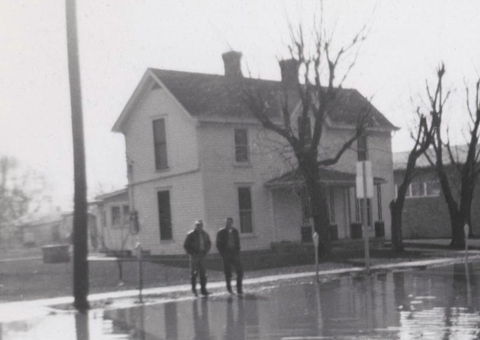
Before the flood, Ben did car repairs at a small shop on the corner of Buckman and Second Street. The little building still stands today and is used again as an auto repair shop. When Ben was using it, the 1937 rains flooded out his business and his home at the time.
A short time later, in 1942, the Parrishes bought the Bridwell place, itself still damaged by the flood, and moved in, not knowing that the family, or the remnants of it, would be there over four decades later.
Ben and Maude's daughter, Linda Parrish Ross, tells me that the house was old then, and it really never recovered from damage sustained from the flood.
The old house, built close to the ground, suffered badly from termites and rot. There was no crawl space under the house. Linda jokes about all the trap doors that her father cut into the floor to get under there to treat the house for termites. "I've often thought how somebody who might discover all those trap doors would think surely we were hiding something, but they were really just so Dad could fight the bugs!"
As the Parrish family grew (sister, Janet Parrish White, now living in Florida, was born in 1943), people continued to line up at the well.
Shorty after Janet was born, there was a fire on the second floor, but the damage was repaired.
The yard was a nice, large, double lot. That was unusual in the town, and the open space made it a magnet for local kids to come and play. There was badminton, and a basketball goal mounted to one of the clothesline poles. By now there were three children at the house, and there were often rows of bikes parked in the yard by neighborhood children who came to play; sometimes eighteen at a time.
The family raised rabbits and had a worm bed for some income, selling worms for a penny a piece.
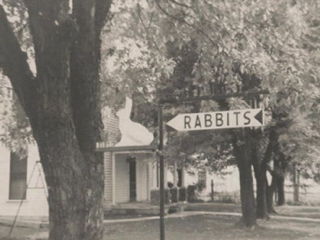
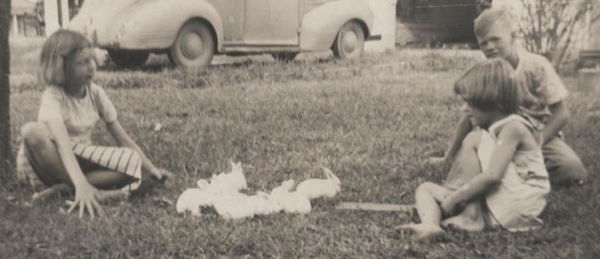
There were good memories made in that yard, but times became difficult at the home place.
Father, Ben, passed away in 1966.
Brother, Darrell Parrish, joined the military, and could seldom be home, leaving sisters Janet and Linda, and mother Maude at the house, and then eventually just Linda and her mother when Janet married and moved away.
There was never air conditioning at the house, and only two coal fireplaces for heat, along with a Seigler oil heater in back.
And there was the water well.
A problem for the women was that the bedrooms of the house were on the side nearest to the well. In a time before air conditioning, when windows had to be wide open in summer, that could be more of a problem than you might think. People would come at all hours of night, with milk cans and tin cans to fill with drinking water. The big old cans would be dropped on the concrete base of the well; the lids of the milk cans had to be hammered off and hammered back on; and all the while the people would be talking and laughing and cursing.
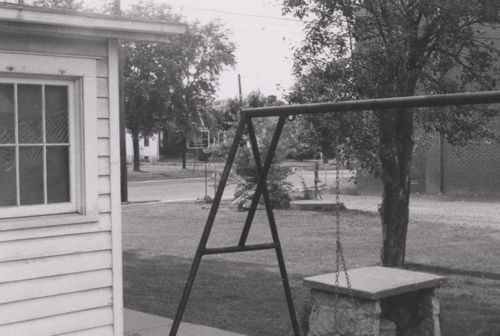
Then the Alltel telephone building was built next door and a pay phone added there just a few feet from the well, making it sort of a hangout for what Linda Parrish Ross recalls as "local hooligans." She says that she knows they were mostly just kids out having some fun, but it certainly was no fun when you are a few feet away in your bedroom trying to sleep, listening to loud talk, fights, and the bushes being used as impromptu restrooms.
One night, Linda and her mother heard someone out in the dark say, "I know there's a bathroom around here someplace..." Maude went outside to find a teenage girl squatting behind her peony bush. When chased away, the girl could be heard saying, "That old lady is MEAN!"
What an image!
Even when there was no one at the phone or the well, the phone would ring at all hours of the night. At other times, there would be fights or kids crying.
And always the incessant clanging of tin cans being filled with water.
Though usually not intended, it could be enough to make anyone a bit cranky.
Eventually, because of night-time disturbances, mother Maude started locking up the well at 10:00 at night. Linda fondly remembers one tall gentleman coming to the house. The man explained that he lived up on the hill and his well had only sulfur water (the foul-tasting water that is common in parts of Bullitt County). He further explained that his work kept him from coming to the good well in the city except late at night.
Arrangements were made, and the man would very politely knock on the door and borrow the key to the well, returning it after pumping water into his cans. To Linda's memory, he was the only one who ever came and explained his situation.
The old well was used until around 1980.
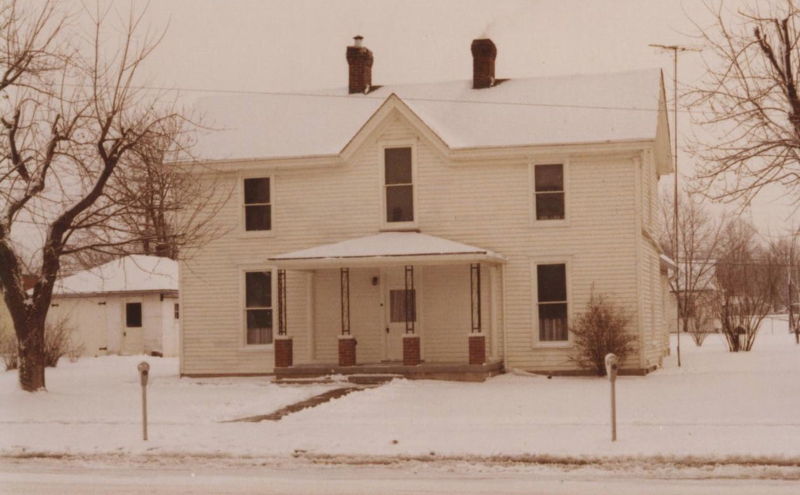
Finally, the old house became too much for mother and daughter to care for, and they moved from the house in 1983. It was sold at auction in 1984, along with the father's tools, by the Thomason & Sohm company. The house then sat empty for a couple of years until J. Chester Porter bought the property, cleared the lot, and built the Porter Building that is there today.
And so, today, a nice brick building stands where a water well once stood.
A water well, a home, and a lot of memories.
My thanks to Linda Parrish Ross, Darrell Parrish, and a couple of former possible "hooligans" for sharing this story with me.
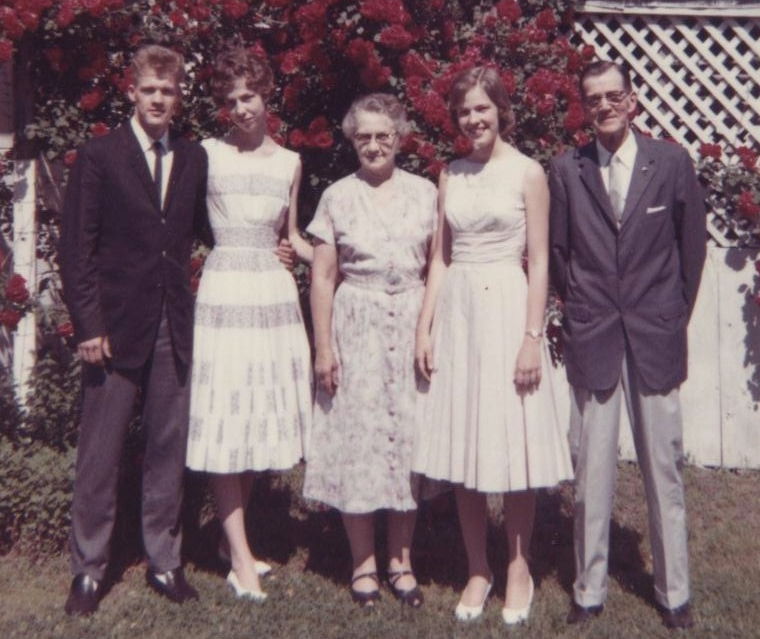
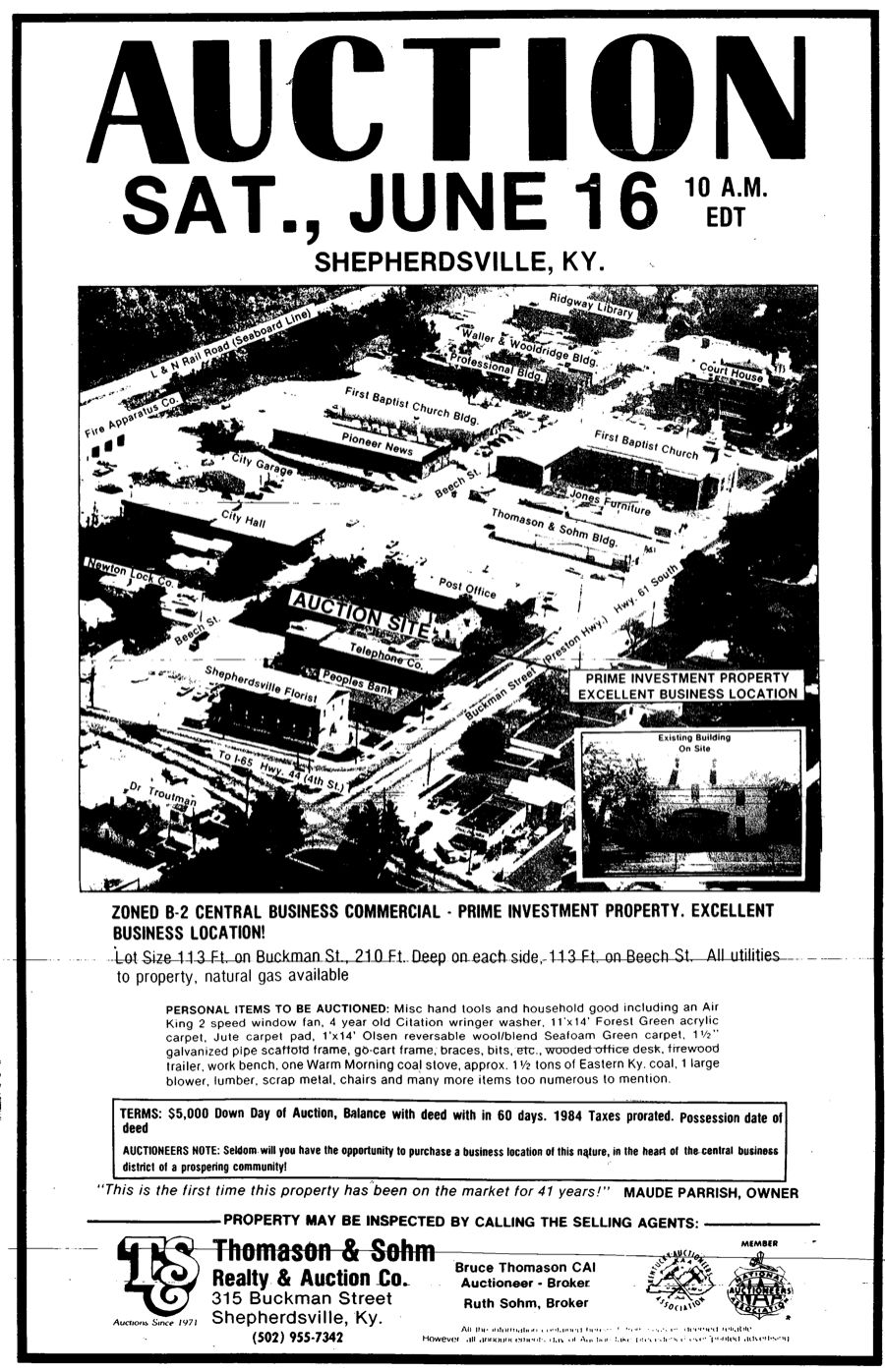
Copyright 2013 by David Strange, Shepherdsville KY. All rights are reserved. No part of the content of this page may be included in any format in any place without the written permission of the copyright holder.
The Bullitt County History Museum, a service of the Bullitt County Genealogical Society, is located in the county courthouse at 300 South Buckman Street (Highway 61) in Shepherdsville, Kentucky. The museum, along with its research room, is open 10 a.m. to 4 p.m. Monday through Friday. Saturday appointments are available by calling 502-921-0161 during our regular weekday hours. Admission is free. The museum, as part of the Bullitt County Genealogical Society, is a 501(c)3 tax exempt organization and is classified as a 509(a)2 public charity. Contributions and bequests are deductible under section 2055, 2106, or 2522 of the Internal Revenue Code. Page last modified: 12 Sep 2024 . Page URL: bullittcountyhistory.org/memories/waterpump.html